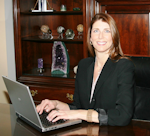BOSTON, MA—What looks and sounds like a commercially sponsored event but acts more like a technical conference for engineers and developers? The answer is COMSOL Users Conferences, which bring a wealth of interesting presentations, training sessions, and minicourses to users of the COMSOL Multiphysics software. COMSOL, developer of high-tech engineering software, headquartered in Stockholm, Sweden and based in Burlington, MA and Los Angeles and Palo Alto, CA—among other global locations—holds numerous COMSOL conferences around the world every year. The conferences are growing in popularity among the 47,000 users of COMSOL’s Multiphysics software. The latest COMSOL conference in Boston Oct. 9—11 brought together 280 attendees to share their experiences, research results, and wealth of knowledge about their use of COMSOL Multiphysics software.
Multiphysics is the combining of multiple fields of physics for modeling of complex systems. Engineers and developers use multiphysics software to evaluate coupled fields within a system, such as electromagnetic waves (light), acoustics, optics, fluid dynamics, electrochemistry, photonics, microelectromechanical systems (MEMS), quantum mechanics, semiconductor materials and devices, and transport phenomena, to name a few.
While several other companies offer multiphysics software, one of the most intriguing aspects of COMSOL and its conferences is the meteoric rise from start-up to the major leagues in ten years, at a time when the computer aided engineering (CAE) industry was undergoing a period of incestuous consolidation. COMSOL entered the U.S. software market in late 1999 when the lion’s share of software companies was being acquired or merging with larger companies. The dot-com and telecom bubbles burst in 2000—2001, followed by the technology sector. Little start-up COMSOL grew. In 2003, 40-year-old engineering software giant Ansys (Canonsburg, PA) bought CFX (Waterloo, Ontario), and in 2006, Fluent (Lebanon, NH). Dassault Systemes (Paris, France), a then 24-year-old success story, bought Abaqus (Providence, RI) in 2005. Consolidation continues today. In March 2008, Ansys struck a deal to acquire Ansoft (Pittsburgh, PA). While a few acquiring giants were also going gangbusters during this period, what’s remarkable is COMSOL’s success as a startup with such a mature market going into the contest.
“The CAE industry as a whole has been growing approximately 15% a year on average,” says Bernt Nilsson, COMSOL’s senior VP of marketing, “and we’re beating that by quite a bit, with revenue growth in the U.S. around 30% for 2007.” COMSOL has 150 employees worldwide, with approximately 50 in the U.S. Adds John Dunec, Palo Alto branch manager, “We think we’re going to get a whole lot bigger.”
What is the secret to COMSOL’s success? The late well-known American chemist Frank Westheimer once said half in jest, “A couple of months in the lab can save you a couple of hours in the library.” At his presentation at the Boston COMSOL Conference, Bill Vetterling, research fellow at Zink Imaging (Bedford, MA) and Multiphysics software user put his twist on the rye saying, “A couple of months in the lab might save an hour with COMSOL Multiphysics.”
Says Dunec, “Anything you can give to a company to give them an ‘unfair’ advantage over their competition is a huge priority item.” In optical applications, where Maxwell’s equations for electromagnetic (EM) waves require solvers, the new 3.5 version of COMSOL Multiphysics offers 2 to 8 times faster time-domain EM wave for a smooth interface with other fields.
